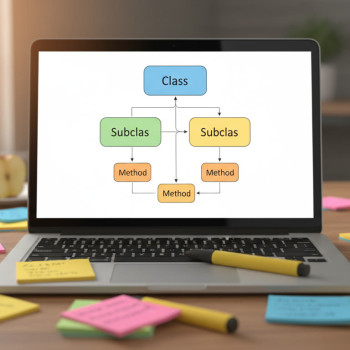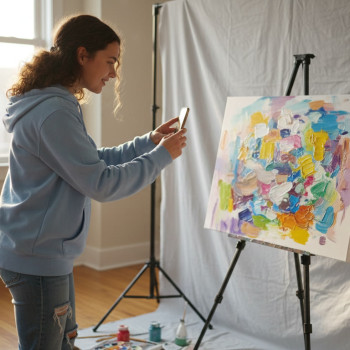Introduction: Why a Mixed Hard Set Matters
If you’re preparing for AP Computer Science or simply want to become a stronger coder, you’ve likely faced problems that don’t live in tidy little boxes. They demand a mix of object-oriented programming (OOP) design, careful manipulation of 2D arrays, and the slow, methodical art of algorithm tracing. This “mixed hard set” is exactly the kind of challenge that appears on AP-style free-response questions and practical programming tasks. Think of this blog as a friendly, in-the-room study session: conversational, practical, and packed with examples, comparisons, and exam-ready tactics.

How to Read This Guide
We’ll move from concept to practice. First, we revisit the core OOP ideas you must be fluent in. Next, we tackle 2D arrays—how to model them, common pitfalls, and efficient patterns. After that, we walk through algorithm tracing: step-by-step simulation of code execution with visual strategies that reduce mistakes. Finally, the post combines all three in mixed-problem walkthroughs that mimic AP problems, with annotated reasoning and a table summarizing common error patterns and fixes.
Part 1 — Object-Oriented Programming: Thinking in Objects
Core OOP ideas you need to own
AP Computer Science (especially the Java-flavored AP CS A) emphasizes a handful of OOP fundamentals. Mastering these lets you design classes that map clearly to problem statements:
- Encapsulation: Keep data private when appropriate and expose behavior through methods.
- Abstraction: Represent real-world entities with concise interfaces; hide implementation details.
- Inheritance and Polymorphism: Use superclasses and interfaces when behaviors are shared, and write code that works with a general type (e.g., a method expecting a Shape reference that may be Circle or Rectangle).
- Class vs. Instance members: Be deliberate about static variables and methods when state or behavior should belong to the class itself.
- Constructor design: Provide robust constructors that ensure each object starts in a valid state.
Pattern: Small, focused classes
Instead of one massive class that does everything, aim for small classes each with single responsibility. For example, in a grid-based simulation, consider separate classes for:
- Cell — represents a single cell’s state and behavior
- Board — maintains a 2D array of Cell, handles updates and rules
- Controller or Simulation — reads inputs, applies steps, and formats outputs
This separation makes testing and tracing easier: when you trace, you can focus on a class at a time.
Part 2 — 2D Arrays: Mental Models and Manipulations
Common 2D array mental models
Students often hesitate when asked about 2D arrays because of indexing confusion (row vs. column) or boundary checks. Here are clean ways to think about 2D arrays:
- Matrix view: Think matrix[row][col] where row is vertical position and col is horizontal. row 0 is top, col 0 is left.
- Grid coordinate view: Treat each element as (r, c). When you iterate neighbors, make a small helper method that returns valid neighbor coordinates.
- Flattened view (when helpful): Map 2D indices to single index via index = r * numCols + c. This is useful for some algorithmic transforms.
Common operations and patterns
There are a few operations you’ll meet over and over—be sure you can implement them fluently:
- Traversal: row-major vs column-major; most problems want row-major (outer loop on rows, inner loop on columns).
- Neighbor checks: loop r +/- 1 and c +/- 1 but always test bounds first.
- Copying arrays: mindful shallow vs deep copy—copy element-by-element for mutable elements or objects.
- Rotation and reflection: use index formulas or temporary arrays to avoid overwriting needed values.
Part 3 — Algorithm Tracing: The Skill That Separates A’s from the Rest
Why tracing matters
AP free-response questions often ask you to simulate a piece of code or deduce its output. Successful tracing demonstrates understanding beyond rote memorization: you show how data flows and how state changes. Tracing is a muscle you build with practice.
Tracing technique — a step-by-step method
Follow this method for clarity and speed:
- Rewrite the code snippet with line numbers. Number every line you will refer to.
- Create a trace table with columns for variables and important data structures (for example, i, j, array, return value).
- Execute line-by-line, filling the table. For loops, either expand a couple of iterations fully or summarize repeated patterns with clear conditions.
- When a method is called, create a mini-trace for it (a separate small table), then return to the main trace when it finishes.
- Use comments to mark when something changes unexpectedly; annotate with why it changed (e.g., boundary condition triggered).
Putting It All Together: Mixed Problems and Walkthroughs
Let’s solve a problem that blends OOP, 2D arrays, and tracing. Work through it slowly; you’ll learn patterns that generalize.
Problem statement (concise)
Design a class GridGame that stores a 2D grid of integers representing terrain heights. Provide methods to:
- countLocalPeaks(): returns the number of cells whose value is strictly greater than all orthogonal neighbors (up, down, left, right).
- raisePlateau(r, c): if the provided coordinates are part of a connected plateau (same height), increase the height of the entire plateau by 1. A plateau is defined using orthogonal adjacency.
Then trace the method calls on a provided 4×4 grid and show the final grid and returned values.
Design with OOP
Create a GridGame class that encapsulates the grid and exposes the two methods above. Encapsulation keeps the grid hidden and methods as the only way to change state.
Key helper functions
- isValid(r, c): checks bounds.
- orthogonalNeighbors(r, c): yields up to 4 neighbor coordinates.
- dfsPlateau(r, c, visited, height): depth-first search to collect plateau coordinates.
Trace example: initial grid and steps
Initial 4×4 grid (rows labeled 0–3, cols 0–3):
| 0 | 1 | 2 | 3 | |
|---|---|---|---|---|
| 0 | 2 | 3 | 3 | 1 |
| 1 | 3 | 3 | 2 | 2 |
| 2 | 1 | 2 | 4 | 2 |
| 3 | 2 | 2 | 2 | 1 |
Steps to perform and trace:
- Call countLocalPeaks().
- Call raisePlateau(1, 1). (The cell at row 1, col 1 has height 3 and is part of a plateau.)
- Call countLocalPeaks() again.
How to trace countLocalPeaks()
Create a trace table with columns: current cell (r,c), value, orthogonal neighbors and their values, isPeak? Accumulate a count.
| Cell | Value | Neighbors (r,c:value) | Is Peak? | Running Count |
|---|---|---|---|---|
| (0,0) | 2 | (0,1:3),(1,0:3) | No | 0 |
| (0,1) | 3 | (0,0:2),(0,2:3),(1,1:3) | No (equal neighbor) | 0 |
| (0,2) | 3 | (0,1:3),(0,3:1),(1,2:2) | No (equal neighbor) | 0 |
| (0,3) | 1 | (0,2:3),(1,3:2) | No | 0 |
| (1,0) | 3 | (0,0:2),(1,1:3),(2,0:1) | No (equal neighbor) | 0 |
| (1,1) | 3 | (1,0:3),(0,1:3),(1,2:2),(2,1:2) | No (equal neighbors) | 0 |
| (1,2) | 2 | (1,1:3),(0,2:3),(1,3:2),(2,2:4) | No | 0 |
| (1,3) | 2 | (0,3:1),(1,2:2),(2,3:2) | No (equal neighbor) | 0 |
| (2,0) | 1 | (1,0:3),(2,1:2),(3,0:2) | No | 0 |
| (2,1) | 2 | (2,0:1),(1,1:3),(2,2:4),(3,1:2) | No (neighbor 4 exists) | 0 |
| (2,2) | 4 | (1,2:2),(2,1:2),(2,3:2),(3,2:2) | Yes | 1 |
| (2,3) | 2 | (1,3:2),(2,2:4),(3,3:1) | No | 1 |
| (3,0) | 2 | (2,0:1),(3,1:2) | No (equal neighbor) | 1 |
| (3,1) | 2 | (3,0:2),(2,1:2),(3,2:2) | No (equal neighbors) | 1 |
| (3,2) | 2 | (3,1:2),(2,2:4),(3,3:1) | No | 1 |
| (3,3) | 1 | (3,2:2),(2,3:2) | No | 1 |
Result: countLocalPeaks() returns 1 (the cell at (2,2) only).
Tracing raisePlateau(1,1)
We must identify the plateau connected to (1,1) with height 3. Perform a DFS/BFS restricted to orthogonal neighbors and same height:
- Start at (1,1) value 3. Mark visited.
- Neighbors: (1,0)=3 ⟶ include; (0,1)=3 ⟶ include; (1,2)=2 ⟶ not included; (2,1)=2 ⟶ not included.
- From (1,0): neighbors (0,0)=2 no, (2,0)=1 no, (1,1) already visited.
- From (0,1): neighbors (0,0)=2 no, (0,2)=3 ⟶ include, (1,1) visited.
- From (0,2): neighbors (0,1) visited, (0,3)=1 no, (1,2)=2 no.
Plateau coordinates found: (1,1), (1,0), (0,1), (0,2). Increase each by 1.
| Before | After |
|---|---|
| (0,1)=3 | (0,1)=4 |
| (0,2)=3 | (0,2)=4 |
| (1,0)=3 | (1,0)=4 |
| (1,1)=3 | (1,1)=4 |
Full grid after plateau raise:
| 0 | 1 | 2 | 3 | |
|---|---|---|---|---|
| 0 | 2 | 4 | 4 | 1 |
| 1 | 4 | 4 | 2 | 2 |
| 2 | 1 | 2 | 4 | 2 |
| 3 | 2 | 2 | 2 | 1 |
Trace countLocalPeaks() again
We now re-run the peak counting with the updated grid. The same tracing method applies—focusing on the most likely peaks:
- (0,1) is now 4, but (1,1) is 4 and (0,2) is 4—so still not a strict peak.
- (2,2) remains 4 and is compared to neighbors (1,2:2),(2,1:2),(2,3:2),(3,2:2). It is still a strict peak.
- Check whether any newly raised cells became peaks: none, because each is adjacent to another cell of equal (raised) value in the plateau.
Result: countLocalPeaks() still returns 1. The plateau raise changed local heights but did not create new strict peaks in this case.
Common Mistakes and How to Avoid Them
When problems mix OOP, arrays, and tracing, students often stumble on a few recurring issues. Here’s a compact reference table and quick fixes.
| Common Mistake | Why It Happens | Quick Fix |
|---|---|---|
| Mixing up row/column order | Inconsistent mental model or iterating columns as outer loop | Stick to row-major: for (r=0; r<rows; r++) for (c=0; c<cols; c++) |
| Off-by-one boundary errors | Forgetting to check 0 and length-1 in neighbor loops | Write an isValid(r,c) helper and use it consistently |
| Mutating array while iterating it carelessly | Overwriting values needed later in the same pass | Use a temporary array or collect updates and apply after traversal |
| Confusing object references with copies | Assuming new Grid = old Grid creates a copy | When copying a 2D array, deep-copy rows: new[r][c] = old[r][c] |
| Incomplete traces for loops and recursive calls | Trying to summarize without showing state changes | Make tables and mini-traces for method calls; expand at least two iterations fully |
Practice Drills You Should Do (and Why)
Practice with purpose. Here are exercises that mirror mixed AP tasks, with focus and timing suggestions.
- Design a class that models a chessboard with piece counts stored in a 2D array. Implement a method to find enclosed regions of empty squares — 40 minutes.
- Given a class that stores a 2D map of temperatures, implement a method that returns coordinates of local cold spots (strictly lower than orthogonal neighbors). Trace it on a 5×5 input — 30 minutes.
- Take a short AP-style prompt that provides code and asks for the final output after a sequence of method calls—practice tracing and writing a short explanation—20 minutes.
Time yourself. Speed matters in the AP exam, but accuracy wins the score. Start slow until you can do each drill flawlessly, then work on pacing.
How Personalized Tutoring Fits (Yes, Sparkl Can Help)
When mixed topics arrive, one-on-one help can accelerate learning. Personalized tutoring (like Sparkl’s personalized tutoring) shines because it gives you tailored study plans, targeted drills on your weak spots, and step-through feedback while you trace code. An expert tutor can spot the tiny mistakes—index flips, forgotten boundary checks, or misapplied OOP principles—that lose points on AP free-response questions. If you use a tutoring program, choose one that blends human guidance with practice analytics and AI-driven insights so you can track progress and focus efforts efficiently.
Exam Day Strategy: From Reading to Response
On test day, approach mixed problems with a calm, systematic routine:
- Read the whole question first. Identify what’s required (design a class? implement a method? trace output?).
- Outline a plan: list helper methods you’ll need and what data each class stores. Keep the plan brief—this is your roadmap.
- When you write code, use clear names and small comments. For free-response, good variable names and short comments can make your logic clearer to the grader.
- If asked to trace, draw a small table immediately. Never rely purely on mental simulation—use the trace table as proof.
- Budget your time: leave a few minutes to re-check boundary conditions and off-by-ones.
Final Example: Putting Everything into One AP-Friendly Prompt
Here’s a compact AP-style prompt you can practice with:
“Write a class TerrainMap that stores a 2D int array heights. Implement public int countBasins(), where a basin is a cell lower than all orthogonal neighbors. Also implement public void fillBasin(r,c) that increases the height of a connected basin (connected orthogonally) by 2. Provide any necessary helper methods.”
How to approach it
- Plan fields: private int[][] heights;
- List helper methods: isValid, orthNeighbors, dfsCollectSameOrLower (for basin discovery).
- Write countBasins: typical double loop + neighbor comparisons.
- Write fillBasin: discover connected basin using DFS/BFS and update in collected list.
- Trace with a 3×3 example to verify behavior.
Wrap-Up and Study Roadmap
Mastering mixed hard sets of OOP, 2D arrays, and algorithm tracing is less about magic and more about disciplined practice and clear mental models. Your study roadmap:
- Week 1: Refresh OOP fundamentals and practice class design problems.
- Week 2: Drill 2D array manipulations and neighbor-traversal patterns.
- Week 3: Intensive tracing practice with timed AP-style problems; use trace tables for every problem.
- Ongoing: Seek targeted help for stubborn patterns. Personalized tutoring (for example, Sparkl’s personalized tutoring) is incredibly effective when you need feedback that’s both immediate and customized.
Parting Tips—A Quick Checklist Before You Submit an Answer
- Did you define all helper methods you used in your plan?
- Are array bounds checked with isValid or guarded conditions?
- If you modified an array while iterating it, did you ensure correctness (use temp arrays if needed)?
- For tracing tasks, have you included enough table rows to justify your answer (expand key iterations)?
- Did you explain corner cases briefly (empty arrays, 1×1 grids) when appropriate?

Learning to navigate problems that combine OOP design, 2D array thinking, and careful algorithm tracing will fundamentally strengthen your problem-solving on the AP Computer Science exam and in real programming. Practice deliberately, trace patiently, and when you need personalized guidance, consider one-on-one tutoring that gives you precise feedback and tailored practice. You’ll find that clarity, not speed, is the first step to consistent high scores. Go solve that next mixed hard set—you’ve got this.
























No Comments
Leave a comment Cancel